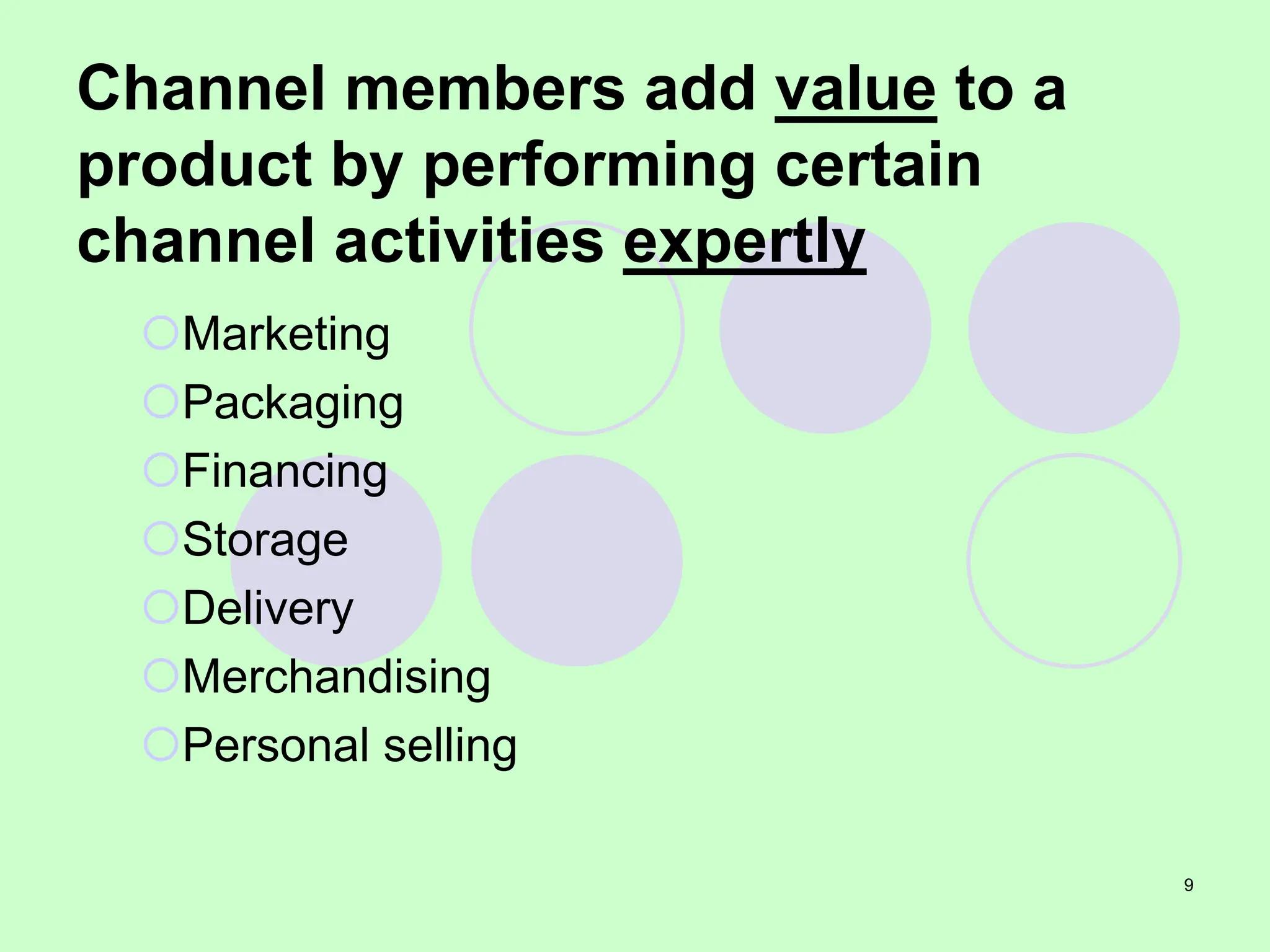This document discusses channel management and distribution. It defines a marketing channel as a set of intermediaries that help move a product from production to consumption. Channel members add value by performing activities like marketing, packaging, financing, storage and delivery. Effective channels have clearly defined member roles and shared goals. Customer service facilitates order processing through timely delivery, communication and handling issues. Technology plays a role through e-commerce, marketplaces and tracking shipments.




























































